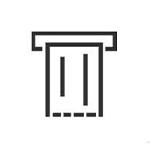In the cosmetic container industry, silk screen printing, hot stamping and offset printing are common printing processes used to decorate and identify cosmetic packaging. Let me give you a detailed introduction to their application in this field:
1.Silk screen printing, also known as screen printing, is a printing process. It uses a silk screen as the base of the plate, and uses a photosensitive plate making method to make the mesh of the graphic part of the screen printing plate pass through the ink, while the mesh of the non-graphic part cannot pass the ink. This creates a pattern or text on the substrate.
2.Hot stamping is a printing method that uses the principle of heat transfer to transfer the aluminum layer to the surface of the substrate, giving the product a metallic luster and bright color. This process is often called "foil stamping" or "silver stamping".
3.Offset printing, also known as offset printing, is a widely used printing technology. It is a lithographic printing method that uses a blanket (rubber) to transfer the graphics and text on the printing plate to the surface of the substrate.
|
Printing Method |
hot stamping |
silkscreen printing |
offset Printing |
| Usual Use in | Glass, Plastic | Glass,Plastic,Metal | Plastic |
| Usual Use on | Jars | Jars, Tubes, Bottles, Vials | Tubes |
| Coloring | Jars | Jars, Tubes, Bottles, Vials | Tubes |
| Cure Time | done | around seven days | Three days |
| print frequency | Small quantity | both | Large quantities |
| procedure | the hot stamping machine heats an engraved mold or die,which then presses marking foil onto the surface. | A layer of ink of the desired colour is applied to the top of the screen and then a squeegee is used to coverthe entire screen with ink. | Transferring ink from the printing plate to the rubbe rcylinder (or blanket) and then to various substrates |
| Production Requirements | Keep ample space between elements and characters to avoid the stamp from spreading the film ink. | Elements no smaller than.005 inchto avoid ink running and causing the screen to fill with dried ink. | Detailed engraving, suitable for products with high craftsmanship requirements |



